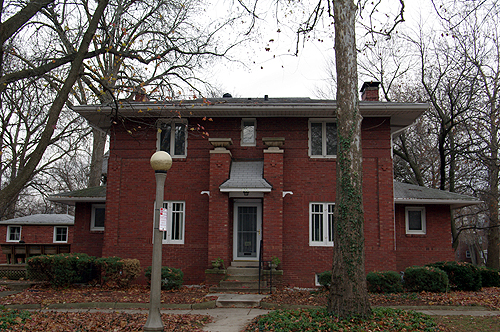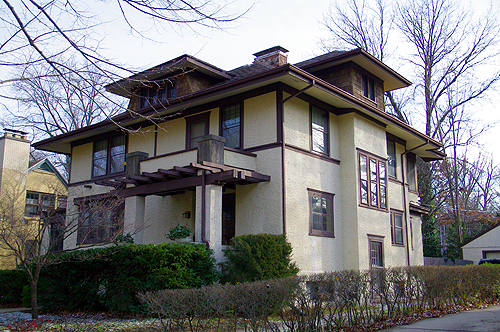Prairie (1900-1920)
 |  |
In the United States, the Arts and Crafts movement represented the first phase of the American Modern movement, leading to two distinct American design traditions – the Prairie style (1900-1920) which began in Chicago under Frank Lloyd Wright and the Craftsman Style (1905-1930), which was started in South California by the Greene brothers.
| |
The Prairie style is one of the most distinctive of the few indigenous American styles. Many of the Prairie architects worked either with Frank Lloyd Wright or with his earlier employer and teacher, Louis Sullivan. Wright’s first houses are in the Chicago area, and the style in its vernacular form spread throughout the country by pattern books published in the Midwest.
| |
Identifying features of the Prairie style include low-pitched hipped roofs with wide overhanging eaves, two-story buildings with one-story wings or porches, cornices, eaves and façade detailing emphasizing the horizontal flatness of the prairie, and massive square porch supports. Details include window boxes or flattened pedestal urns for flowers, geometric patterns of small pane windows with stained glass, inspired by natural forms of grass and other prairie species, broad flat chimneys, and contrasting wall materials or trims emphasizing the upper story. Later Wright houses often have internal gardens and wide, open floor plans. | |
